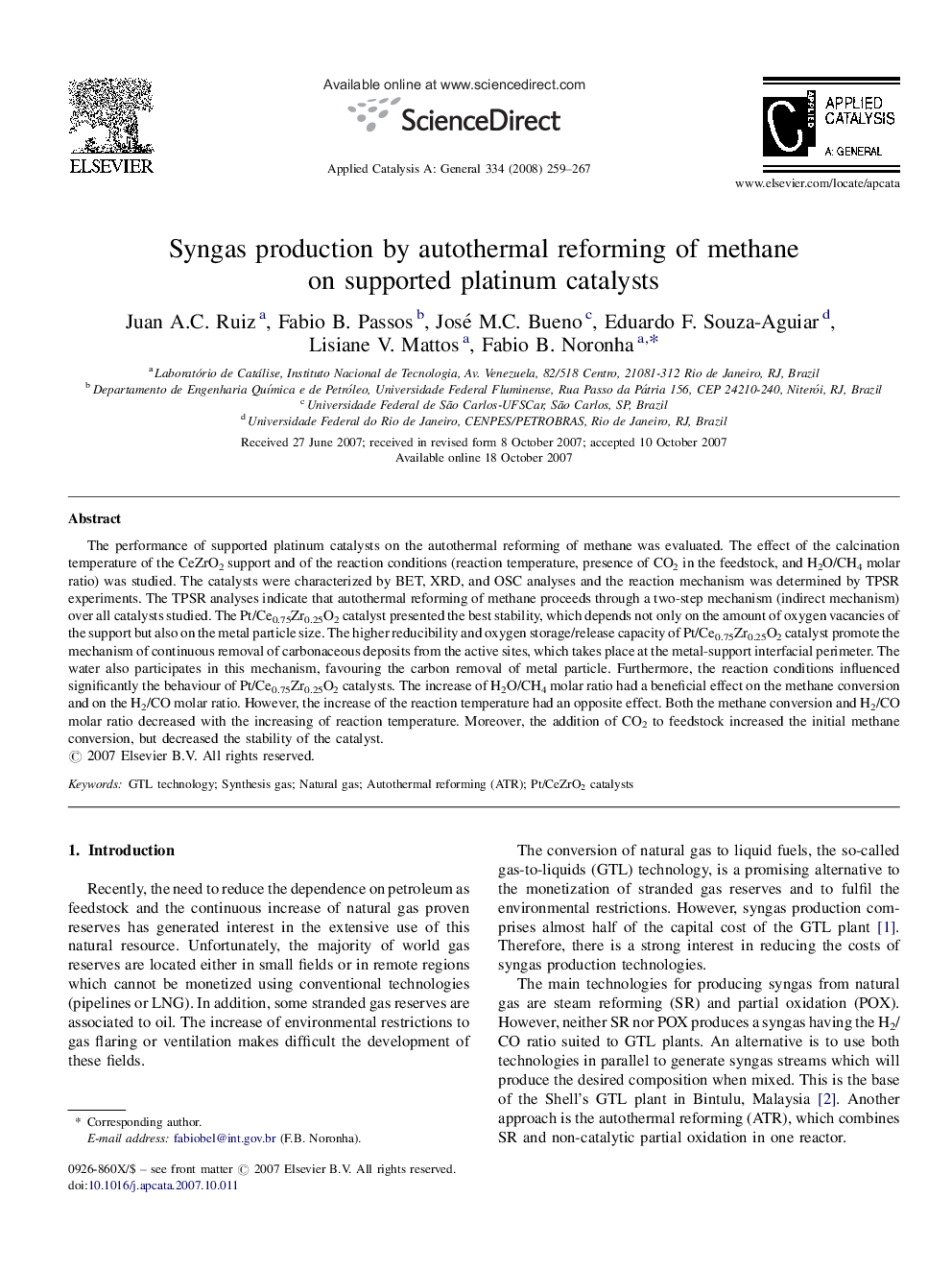| Article ID | Journal | Published Year | Pages | File Type |
|---|---|---|---|---|
| 43215 | Applied Catalysis A: General | 2008 | 9 Pages |
The performance of supported platinum catalysts on the autothermal reforming of methane was evaluated. The effect of the calcination temperature of the CeZrO2 support and of the reaction conditions (reaction temperature, presence of CO2 in the feedstock, and H2O/CH4 molar ratio) was studied. The catalysts were characterized by BET, XRD, and OSC analyses and the reaction mechanism was determined by TPSR experiments. The TPSR analyses indicate that autothermal reforming of methane proceeds through a two-step mechanism (indirect mechanism) over all catalysts studied. The Pt/Ce0.75Zr0.25O2 catalyst presented the best stability, which depends not only on the amount of oxygen vacancies of the support but also on the metal particle size. The higher reducibility and oxygen storage/release capacity of Pt/Ce0.75Zr0.25O2 catalyst promote the mechanism of continuous removal of carbonaceous deposits from the active sites, which takes place at the metal-support interfacial perimeter. The water also participates in this mechanism, favouring the carbon removal of metal particle. Furthermore, the reaction conditions influenced significantly the behaviour of Pt/Ce0.75Zr0.25O2 catalysts. The increase of H2O/CH4 molar ratio had a beneficial effect on the methane conversion and on the H2/CO molar ratio. However, the increase of the reaction temperature had an opposite effect. Both the methane conversion and H2/CO molar ratio decreased with the increasing of reaction temperature. Moreover, the addition of CO2 to feedstock increased the initial methane conversion, but decreased the stability of the catalyst.
Graphical abstractThe performance of supported Pt catalysts on the autothermal reforming of methane was evaluated under different reaction conditions. The TPSR analyses indicate that autothermal reforming of methane proceeds through a two-step mechanism over all catalysts studied. The Pt/Ce0.75Zr0.25O2 catalyst presented the best stability, which depends not only on the amount of oxygen vacancies of the support but also on the metal particle size. Figure optionsDownload full-size imageDownload as PowerPoint slide
